The Mexican Navy has outlined its plan to deal with Sargassum on the beaches of the Mexican Caribbean in the newly released 2023 Sargassum Operation.
The plan comes amidst an unexpected wave of sargassum arriving in the region this spring earlier than expected.
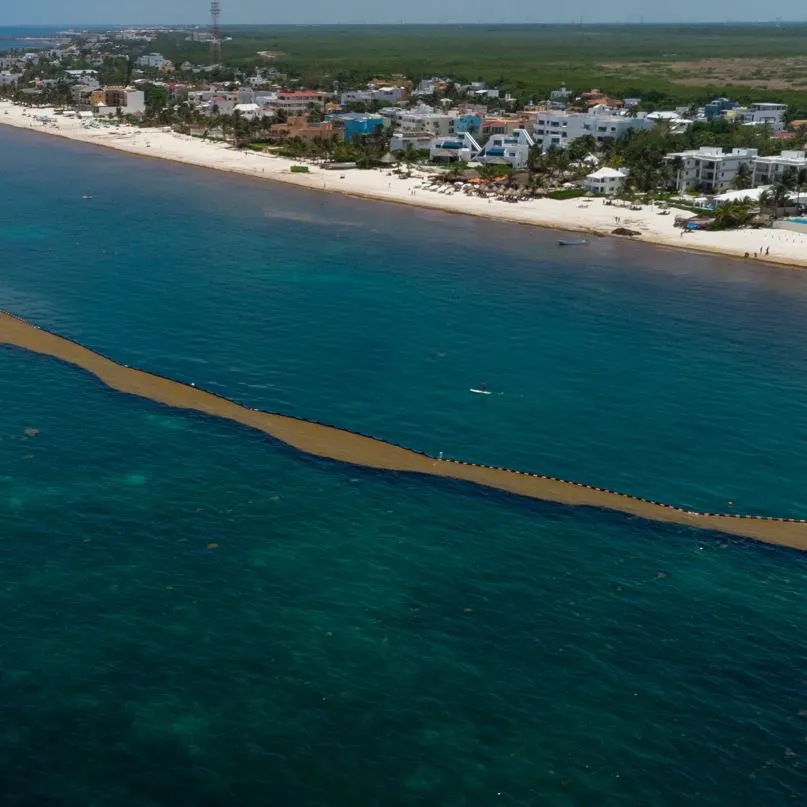
José Rafael Ojeda Durán, head of the Navy, presented the plan to the media. The Navy has decided to deploy anti-sargassum barriers as its main weapon in the fight against sargassum seaweed.
According to Ojeda Durán, more than 9,000 meters of barriers have already been installed around popular beaches on the Yucatan Peninsula.
The majority of these barriers have been installed in the waters off of Solidaridad, Puerto Morelos, and Tulum, protecting beaches in Cancun, Playa del Carmen, and other tourist destinations.
In addition, sargassum removal operations continue off the coast of Quintana Roo. 328 people and 16 boats are currently participating in these operations.

The Navy also has 11 special vessels dedicated specifically to sargassum clean-up spread across the waters of the Mexican Caribbean.
What Is Sargassum?
Sargassum is a species of seaweed that is often swept onto the beaches frequented by tourists in the Gulf of Mexico.
Unlike some other forms of seaweed, sargassum is not attached to the ocean floor, but rather floats on top of the water, moving along with ocean currents. On occasion, sargassum can cover miles of open ocean.
Top 5 Travel Insurance Plans For 2023 Starting At $10 Per Week
Easily Earn Points For Free Travel
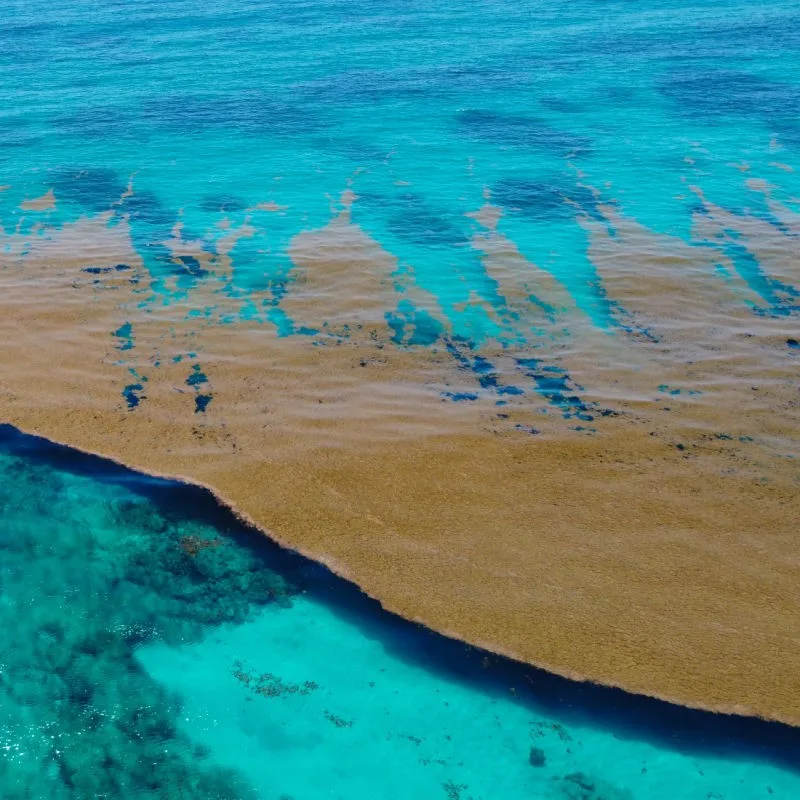
In natural systems, sargassum plays many important roles. For sea life, sargassum provides food, refuge, and breeding grounds. The “sargassum fish” lives out its entire lifespan under the protection of sargassum rafts.
Why Is There So Much Sargassum In The Caribbean?
Not long ago, sargassum was a minor disturbance to beach-goers and not more of a concern than any other species of seaweed.
In 2011, however, scientists became concerned about abnormally large sargassum blooms in the Atlantic. The problem has gotten worse with the years, as satellites can now observe a 5,500-mile-long, 10 million-ton sargassum belt in the Atlantic Ocean.
According to Brian Lapointe, a research professor at Florida Atlantic University who has been studying sargassum for over 40 years, the root of the issue may be found on land.
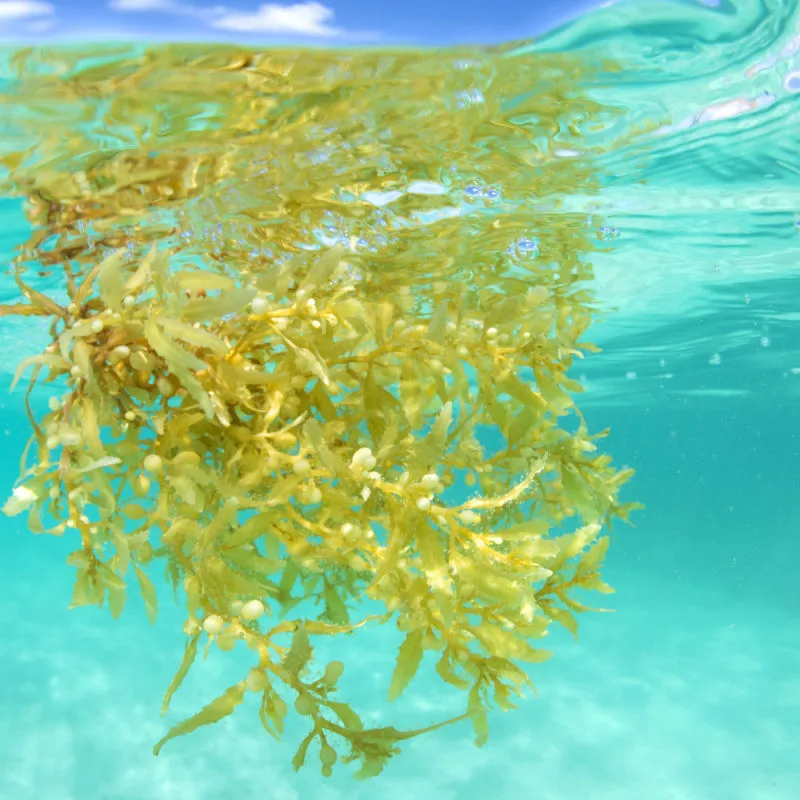
As human waste from cities and fertilizer from agriculture run off into rivers leading to the Gulf of Mexico and the Atlantic Ocean, ammonium, phosphate, and nitrate run off with them. These nutrients then fuel increased sargassum growth.
“It’s almost like sargassum is a barometer for how global nitrogen levels are changing,” said Lapointe.
According to Lapointe, the best way to fight sargassum long-term is to clean up inland waters.
The Problem
In addition to being a nuisance to beach-goers, sargassum can release unpleasant gases like hydrogen sulfide once it is on land.
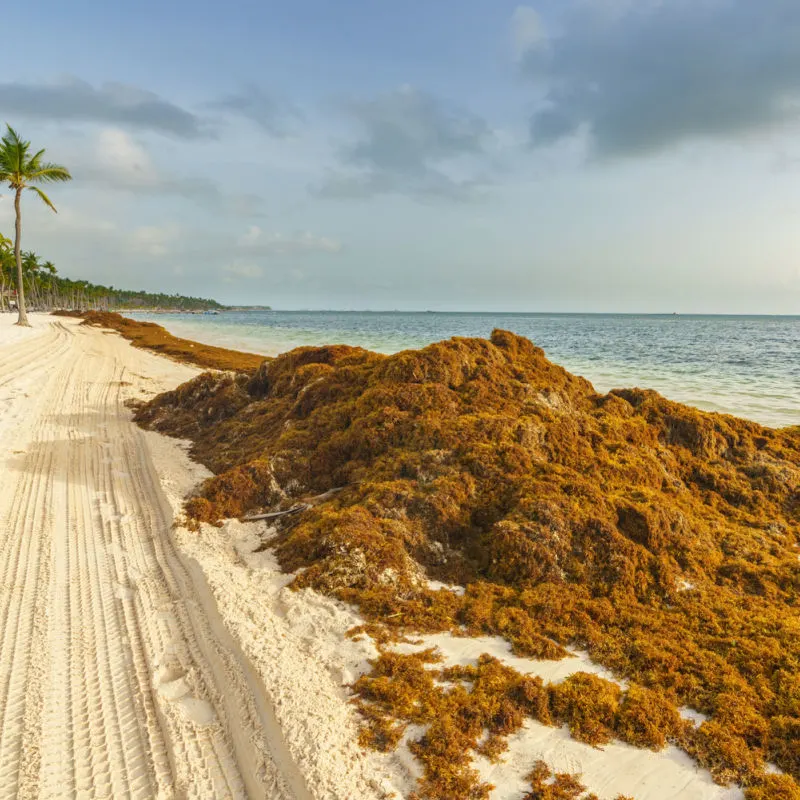
Hydrogen sulfide smells like manure or rotten eggs and can be hazardous to people with respiratory issues.
Sargassum begins to rot after 48 hours on land, so quick removal is key for beaches that hope to be frequented by tourists.
Other Actions In The Riviera Maya
The Mexican Navy is not the only organization taking strong action against the onslaught of sargassum.
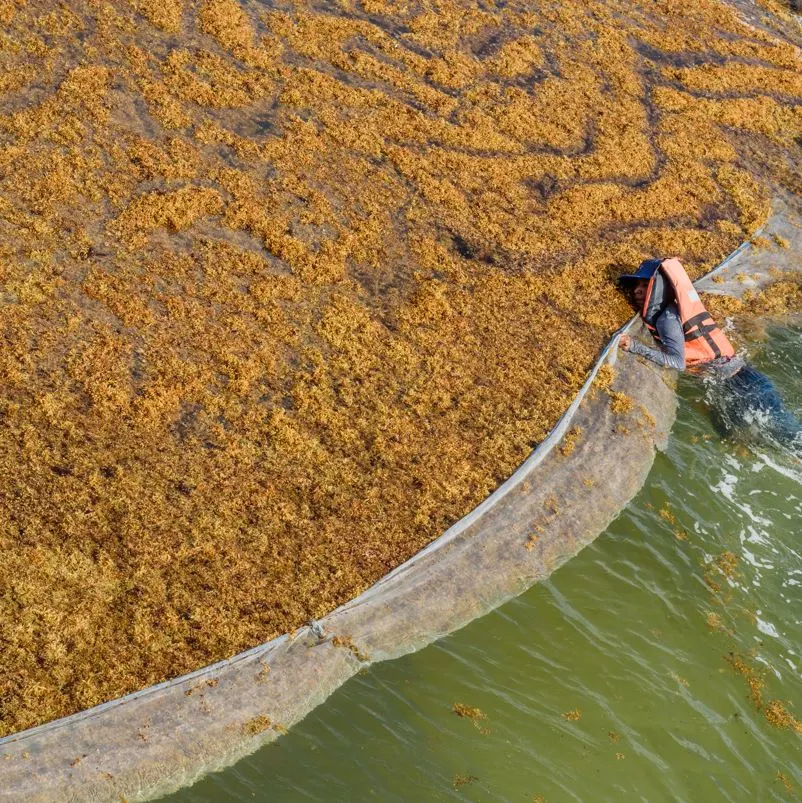
Like the Navy, the Riviera Maya Hotel Association hopes to collect sargassum well before it ever reaches a beach.
However, sargassum levels are expected to be so high this year that ocean collection is not a feasible solution alone.
Nevertheless, hotels and resorts in Cancun and other tourism hotspots hope to take the trash washing up on their shores and turn it into treasure. Their plan includes collecting sargassum from their beaches and converting it into biofuel.
Their $100 million project has attracted major international investment and interest from major corporations such as Amazon and Microsoft.
The industry is hopeful to begin taking action this year and see the full effect of said actions as soon as August 2024.
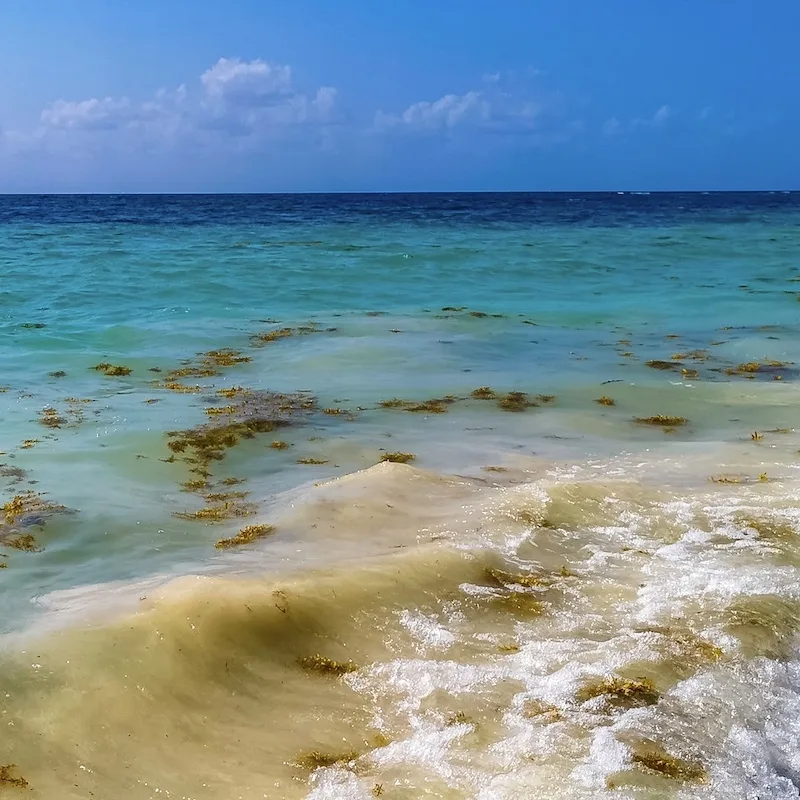
Though sargassum is a daunting problem for the region, Antonio Chaves, head of the Riviera Maya Hotel Association, is not worried, saying that the hotels “have a range of resources to fight against sargassum seaweed” and that financing will not be an issue thanks to international partnerships.
Plan Your Next Cancun Vacation:
Traveler Alert: Don’t Forget Travel Insurance For Your Next Trip!
Choose From Thousands of Cancun and Riviera Maya Hotels, Resorts and Hostels with Free Cancellation On Most Properties
↓ Join the community ↓
The Cancun Sun Community FB group has all the latest travel news, conversations and tourism Q&A’s for the Mexican Caribbean

Subscribe to our Latest Posts
Enter your email address to subscribe to The Cancun Sun’s latest breaking news affecting travelers, straight to your inbox.

For your English info.
Saturday 8th of April 2023
That's a terrible way to say that. It's called seaweed. Sargassum just sounds like the ocean is c*&^@($ all over the place.